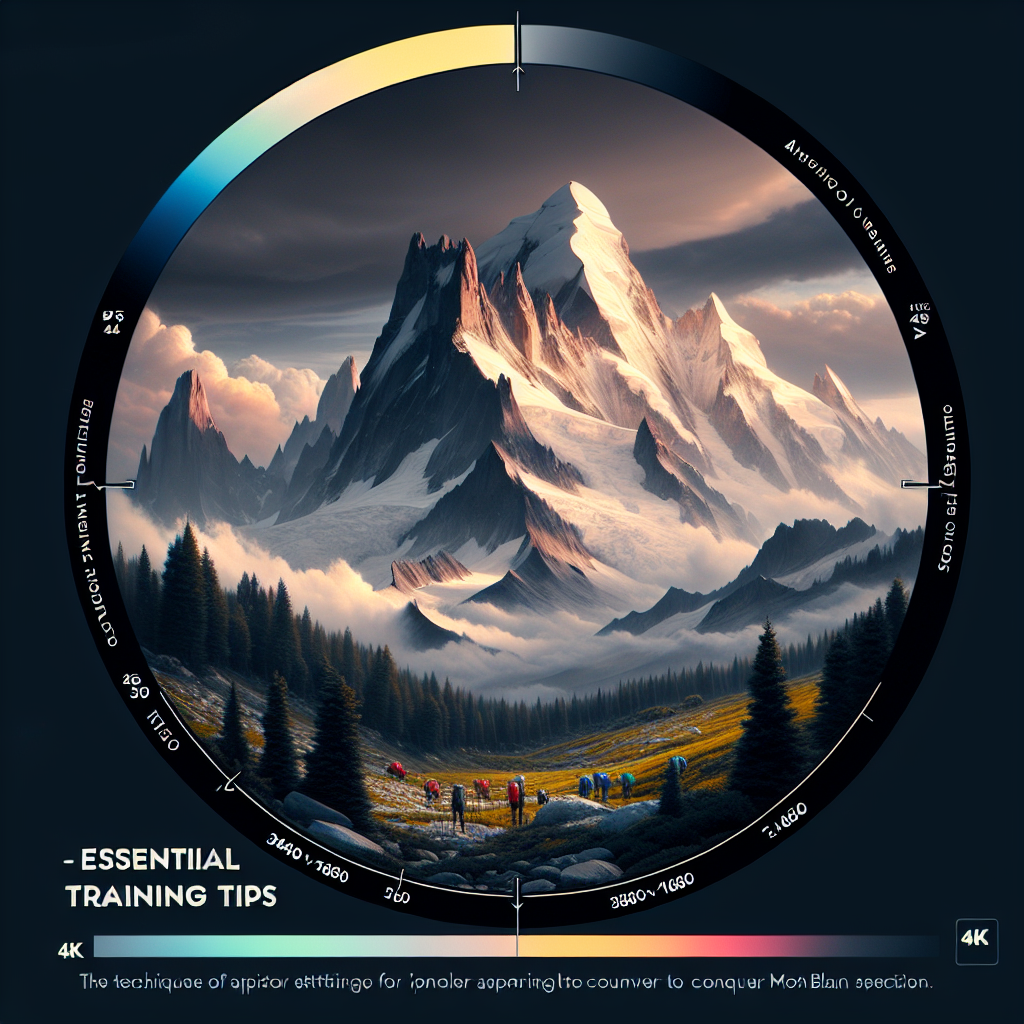
-
Table of Contents
- Conquering Mont Blanc: Essential Training Tips for Aspiring Climbers
- Understanding the Challenge
- Physical Demands
- Altitude Challenges
- Weather Conditions
- Physical Training
- Endurance Training
- Strength Training
- Flexibility Training
- Technical Skills
- Rope Work
- Crampon Use
- Navigation
- Acclimatization
- Pre-Climb Acclimatization
- On-Mountain Acclimatization
- Preparation and Planning
- Equipment
- Route Planning
- Risk Management
- Conclusion
Conquering Mont Blanc: Essential Training Tips for Aspiring Climbers

Mont Blanc, the highest peak in Western Europe, is a dream destination for many mountaineers. Standing at a staggering 4,810 meters, it presents a formidable challenge that requires physical strength, mental resilience, and technical skills. This article provides a comprehensive guide on how to prepare for this epic adventure, with essential training tips and insights from seasoned climbers.
Understanding the Challenge
Before embarking on your training journey, it’s crucial to understand the challenges that Mont Blanc presents. The climb is physically demanding, with long days of continuous uphill and downhill movement. The altitude can also cause problems, with the thin air making breathing difficult and potentially leading to altitude sickness. Additionally, the mountain’s unpredictable weather can turn a challenging climb into a dangerous one.
Physical Demands
Mont Blanc is not a climb to be taken lightly. The ascent and descent typically take two days, with climbers often spending over 12 hours on the move each day. This requires a high level of physical fitness, particularly in the legs and core.
Altitude Challenges
The effects of altitude can start to be felt from around 2,500 meters, with symptoms including headaches, nausea, and fatigue. At the summit of Mont Blanc, the oxygen level is only about 60% of that at sea level, making physical exertion much more difficult.
Weather Conditions
The weather on Mont Blanc can change rapidly, with storms often rolling in without warning. Climbers need to be prepared for a range of conditions, from blazing sun to freezing temperatures and high winds.
Physical Training
Given the physical demands of climbing Mont Blanc, a rigorous training program is essential. This should focus on building endurance, strength, and flexibility.
Endurance Training
Endurance is key for long days of climbing. This can be built up through activities such as running, cycling, and swimming. As the climb approaches, try to mimic the conditions of the mountain by going on long hikes with a heavy backpack.
Strength Training
Strength, particularly in the legs and core, is crucial for climbing. Regular strength training sessions should be incorporated into your routine, focusing on exercises such as squats, lunges, and planks.
Flexibility Training
Flexibility can help to prevent injuries and improve performance on the mountain. Incorporate regular stretching into your routine, focusing on the legs, back, and shoulders.
Technical Skills
Alongside physical fitness, technical skills are crucial for a successful climb. These include rope work, crampon use, and navigation.
Rope Work
Rope work is a key skill for climbing Mont Blanc. This includes tying knots, belaying, and moving as part of a roped team. Many climbers choose to attend a mountaineering course to learn these skills.
Crampon Use
Crampons are metal spikes that are attached to your boots to provide traction on ice and snow. Using them effectively requires practice, so try to get some experience on snow and ice before your climb.
Navigation
While most climbers use a guide for Mont Blanc, basic navigation skills are still important. These include map reading and the use of a compass and altimeter.
Acclimatization
Acclimatization is the process of adjusting to the decrease in oxygen at higher altitudes. This can help to prevent altitude sickness and improve performance on the mountain.
Pre-Climb Acclimatization
Before your climb, try to spend some time at altitude. This could be through a high-altitude trek or by using an altitude training mask.
On-Mountain Acclimatization
During your climb, it’s important to acclimatize gradually. This typically involves a process known as “climb high, sleep low”, where you ascend to a new altitude during the day, then descend to sleep.
Preparation and Planning
Finally, thorough preparation and planning are key to a successful climb. This includes choosing the right equipment, planning your route, and understanding the risks.
Equipment
Choosing the right equipment is crucial for safety and comfort on the mountain. This includes clothing, boots, climbing gear, and emergency equipment.
Route Planning
There are several routes up Mont Blanc, each with its own challenges and rewards. Research each option thoroughly and choose the one that best suits your skills and experience.
Risk Management
Understanding the risks of climbing Mont Blanc is crucial. This includes the risk of altitude sickness, avalanches, and falls. Always listen to your guide and never push beyond your limits.
Conclusion
Climbing Mont Blanc is a formidable challenge, but with the right training and preparation, it’s an achievable goal. By building your physical fitness, honing your technical skills, acclimatizing effectively, and planning thoroughly, you can give yourself the best chance of success. Remember, the journey is as important as the destination, so enjoy the training process and look forward to the adventure of a lifetime.